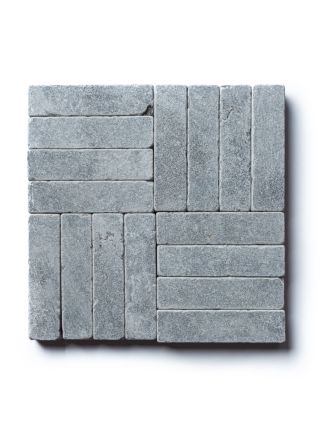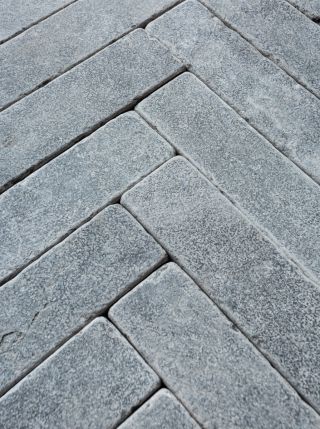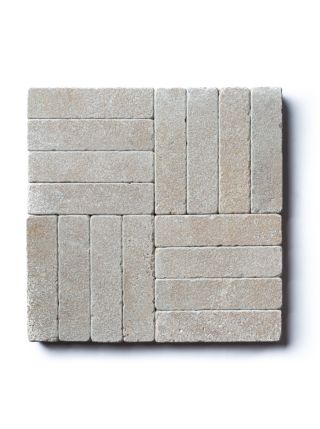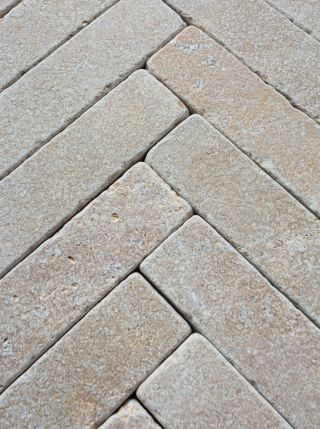Limestone Cobbles
Limestone Cobbles are the perfect option to set boundaries between your paving slabs and grass areas, these a robust enough to use for driveways or alternatively can be used to create a unique patio space!
They also offer practical benefits with keeping your garden areas looking clean with their cobble lines edging the patios or paths. These cobbles also helps to keep the other paving stable and helps to keep foot traffic within the confines of the edging.
Speak to a member of our friendly sales team today on 01482 688008 or Email sales@meltonstone.co.uk
Limestone Cobbles
Can I park my car on cobble set driveway?
Yes, you can park your car on a cobble set driveway, but there are some important factors to consider to ensure the driveway can withstand the weight and pressure of the vehicle over time:
1. Cobble Sett Thickness: Make sure the cobble setts used for the driveway are of sufficient thickness to handle the weight of the vehicle. Thicker cobble setts, typically around 50mm (2 inches) or more, are more suitable for driveways with vehicular traffic.
2. Base Preparation: The foundation or base beneath the cobble setts is crucial for supporting the weight of the car. The base should be properly compacted, well- drained, and designed to handle the load.
3. Grouting: The joints between the cobble setts should be filled with a suitable grouting material to provide stability and prevent movement of the setts due to the weight of the car.
4. Edge Restraints: Proper edge restraints, such as concrete kerbs or metal edging, can help keep the cobble setts in place and prevent spreading or displacement caused by vehicle weight.
5. Proper Installation: Ensure that the cobble setts are installed correctly and according to industry standards to create a stable and durable driveway surface.
6. Regular Maintenance: Regular maintenance is essential to keep the driveway in good condition. Inspect for any loose or damaged setts, and promptly repair or replace them as needed.
It's important to note that cobble set driveways can create a charming and aesthetically pleasing entrance to your property, but they may require more maintenance compared to other types of driveways. The natural variations and textures of cobble setts can add character and visual appeal to your driveway, but they may also require occasional cleaning to remove debris and prevent weed growth.
How do you lay cobble edging around a patio?
Step 1: Mark the Edging Layout. Measure and mark your project area.
Step 2: Dig a small trench for the Cobble Setts. Using a shovel, dig a trench along the area you marked.
Step 3: Add a minimum of 100mm mot type 1 hardcore and compact.
Step 4: Lay each individual cobble stone on full mortar bed of 5:1 sharp sand and cement. Top tip…dip each cobble into a tub of slurry primer before laying.
Step 5: Grout the cobbles using sand a cement mortar or specialist product such as Flowpoint. Do not grout cobbles using a brush in jointing compound.
How can I clean Limestone Cobbles
When cleaning limestone cobbles it is important that you are using a cleaning product that is safe for use on limestone cobbles and paving.
To maintain the beautiful look of limestone cobbles you need to avoid the use of any acid-based cleaners as this can affect the colour and stain your cobbles. We recommend using a Neutral or mild alkaline-based cleaner, as this will clean the surface without damaging the product.
How to grout Limestone block sett cobbles?
Grouting Limestone block sett cobbles is a crucial step in the installation process that helps stabilize the cobbles, prevent weed growth, and provide a finished appearance. Here's a step-by-step guide on how to grout Limestone block sett cobbles:
Materials Needed:
- Polymeric sand or jointing compound suitable for natural stone
- Soft-bristle brush or broom
- Water
- Rubber mallet or tamper (optional)
Step 1: Prepare the Surface
Ensure that the cobbles are laid firmly and evenly on a compacted and level base. Check for any loose or unstable cobbles and reposition them if necessary. Make sure the surface is clean and free of debris.
Step 2: Choose the Grout
Select a polymeric sand or jointing compound suitable for natural stone installations. Follow the manufacturer's instructions for the specific product you have chosen.
Step 3: Wet the Surface (Optional)
Some polymeric sands require a damp surface before application. Check the product guidelines to determine if wetting the surface is necessary.
Step 4: Fill the Joints
Pour the polymeric sand or jointing compound over the cobbles, aiming to fill the joints completely. Use a soft-bristle brush or broom to sweep the grout into the joints. Work the grout back and forth until it is fully compacted.
Step 5: Remove Excess Grout
Once the joints are filled, use the brush or broom to remove any excess grout from the surface of the cobbles. This will help ensure a clean and uniform appearance.
Step 6: Compact the Grout (Optional)
If required by the product instructions, use a rubber mallet or tamper to lightly tap the cobbles to further compact the grout and settle it into the joints.
Step 7: Clean the Surface
Carefully clean the surface of the cobbles with water and a sponge to remove any remaining residue from the grouting process. Avoid excessive water that could wash out the grout from the joints.
Step 8: Allow to Cure
Follow the manufacturer's guidelines for curing time. Polymeric sand or jointing compounds typically require moisture to activate the binding agents, and the grout needs time to set properly.
Step 9: Repeat (If Necessary)
If any joints appear low or have settled during the curing process, add additional grout to fill these gaps.
Step 10: Final Inspection
Inspect the grouted cobbles to ensure that all joints are adequately filled and the surface is even and level. Make any necessary touch-ups or adjustments before the grout fully cures.
Remember to follow the specific instructions provided by the manufacturer of the polymeric sand or jointing compound you are using, as different products may have varying application methods and curing times. Properly grouted Limestone block sett cobbles will enhance the durability and appearance of your paved surface, providing a long-lasting and attractive outdoor feature.






